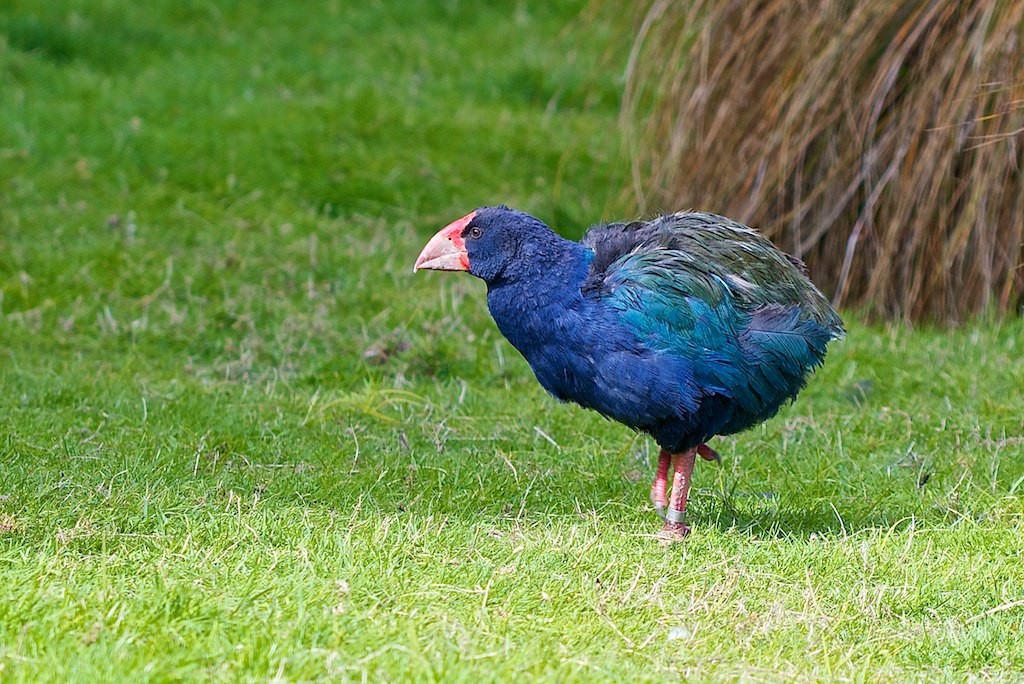South Island Takahe
A species of Swamphens, Also known as Notornis Scientific name : Porphyrio hochstetteri Genus : Swamphens
South Island Takahe, A species of Swamphens
Also known as:
Notornis
Botanical name: Porphyrio hochstetteri
Genus: Swamphens
Content
Description People often ask General Info
 Photo By Harald Selke , used under CC-BY-SA-2.0 /Cropped and compressed from original
Photo By Harald Selke , used under CC-BY-SA-2.0 /Cropped and compressed from original Description
The south Island Takahe is a rare, flightless bird that was once considered extinct, until its rediscovery in 1948. The world's largest living rail is a vegetarian that feeds strictly on grasses and plant material. It's a territorial bird that defends its area aggressively. A very important bird in Maori culture, the south Island Takahe is threatened by a number of factors. The overall population counts only around 400 birds.
Size
63 cm
Life Expectancy
20 years
Nest Placement
Ground
Feeding Habits
South Island Takahe primarily feeds on native grasses, complementing its diet with leaves, roots, and shoots. It exhibits a unique 'tussock-bashing' method to access food, and shows a preference for the starchy rhizomes of certain plants.
Habitat
The south Island Takahe thrives in alpine tussock grasslands and transitions to subalpine scrub and beech forests during harsh winter conditions. This region is characterized by plentiful moisture, heavy snowfall, and a rich understory of shrubs, ferns, and grasses. Adapted to high altitudes, the south Island Takahe commonly resides above the treeline, showcasing resilience to environmental changes, including human-induced habitat alterations.
Dite type
Omnivorous
People often ask
General Info
Feeding Habits
Bird food type
Behavior
The takahē is a sedentary and flightless bird currently found in alpine grasslands habitats. It is territorial and remains in the grassland until the arrival of snow, when it descends to the forest or scrub. A takahē has been recorded feeding on a paradise duckling at Zealandia. Although this behaviour was previously unknown, the related pukeko occasionally feeds on eggs and nestlings of other birds as well. 
Distribution Area
The species is still present in the location where it was rediscovered in the Murchison Mountains. Small numbers have also been successfully translocated to five predator-free offshore islands, Tiritiri Matangi, Kapiti, Maud, Mana and Motutapu, where they can be viewed by the public. Additionally, captive takahē can be viewed at Te Anau and Pukaha/Mt Bruce wildlife centres. 
Species Status
The near-extinction of the formerly widespread takahē is due to a number of factors: over-hunting, loss of habitat and introduced predators have all played a part. The introduction of red deer (Cervus elaphus) represent a severe competition for food, while the stoats (Mustela erminea) take a role as predators. The spread of the forests in post-glacial Pleistocene-Holocene has contributed to the reduction of habitat. 